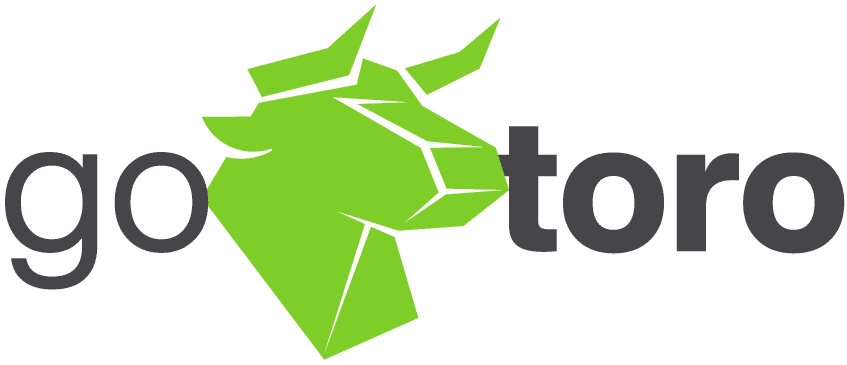In the ever-evolving landscape of business, the significance of recruitment cannot be overstated. It stands as a cornerstone for organizational success, shaping the workforce that drives innovation and competitiveness. In this context, social media recruitment has emerged as a transformative tool, fundamentally altering how companies attract and engage with potential candidates. This blog post delves into the role of social media in modern recruitment strategies, highlighting how it revolutionizes the process of sourcing and acquiring top talent.
The Rise of Social Media in Recruitment

The adoption of social media recruitment strategies has seen a remarkable upsurge in recent years. According to a Betterteam survey, 70% of hiring managers say they’ve successfully found and hired candidates with social media, underscoring its growing impact. This trend is not limited to LinkedIn alone; platforms like Facebook, Twitter, and even Instagram are becoming recruitment hotspots. Another study from Clutch showed that 1 in 10 people find their jobs through social media. Leading companies, such as Google and Deloitte, are leveraging these platforms not just to post job openings but also to showcase their company culture and engage with potential candidates in a more dynamic and personal way. This paradigm shift signifies a broader recognition of social media as a vital tool in the recruitment arsenal, transcending industries and geographical boundaries.
Advantages of Using Social Media for Recruitment
Social media recruitment offers a plethora of advantages over traditional recruitment methods. Firstly, it significantly broadens the reach. Allowing companies to tap into a diverse pool of candidates, both passive and active job seekers. This diversity is not just in terms of demographics but also in skills and experiences, crucial for businesses seeking innovative and varied perspectives.
In terms of employer branding, social media is unmatched. It provides a platform for companies to showcase their values, culture, and vision, thereby attracting candidates who resonate with the organization’s ethos. This visibility is not just limited to job postings but extends to sharing success stories, employee testimonials, and corporate achievements, building a compelling narrative around the company’s employer brand.
From a cost perspective, social media recruitment is far more economical compared to traditional methods. Posting jobs on social media platforms is often free or requires minimal investment, a stark contrast to the high costs associated with job boards or recruitment agencies.
Lastly, social media enables faster and more interactive communication with candidates. Instant messaging, comments, and shares allow for real-time engagement, significantly reducing the time-to-hire and fostering a more dynamic candidate experience.
Key Social Media Platforms for Recruitment
Different social media platforms offer unique features for a social media recruitment strategy. LinkedIn, renowned for professional networking, is ideal for targeting professionals and sharing industry-specific content. Facebook’s diverse user base allows recruiters to reach a wide variety of candidates, leveraging both posts and targeted ads. Twitter (X) excels in real-time engagement, perfect for sharing job openings and company news quickly. TikTok, with its rising popularity, offers creative ways to showcase company culture through short, engaging videos. Lastly, Instagram is great for visual storytelling, ideal for highlighting workplace environment and employee experiences.
Each platform requires a tailored approach. LinkedIn works best for detailed job descriptions and professional content. Facebook is ideal for broader job ads and company updates. Twitter suits brief, attention-grabbing announcements. TikTok can showcase a company’s creative side, while Instagram is perfect for visual insights into the company’s day-to-day life.
Developing a Social Media Recruitment Strategy

Developing an effective social media recruitment strategy begins with identifying the target audience. Understand where potential candidates spend their time online. Choose platforms that align with your company’s industry and the type of candidates you seek.
Creating compelling content is next. Showcase your company culture and values. Share stories that reflect what it’s like to work at your company. Use videos, images, and employee testimonials to make your content engaging and authentic.
Engage with potential candidates actively. Respond to comments and messages promptly. Build relationships online by joining relevant groups and participating in discussions. This approach fosters a connection with potential candidates even before the formal recruitment process begins.
Best Practices for Recruitment on Social Media
Consistency is key in any social media recruitment strategy. Maintain an active presence. Regularly post job openings, company news, and employee stories. This consistency keeps your audience engaged and informed.
Leverage your employee networks. Encourage employees to share job openings and positive experiences. This strategy extends your reach and adds a personal touch to your recruitment efforts.
Compliance with legal and ethical standards is crucial. Ensure your recruitment practices do not discriminate and respect privacy laws. Be transparent and professional in all your communications.
Monitor and analyze your efforts. Use analytics tools to track the performance of your posts and ads. Understand what works and what doesn’t. Adjust your strategy based on these insights to continuously improve your recruitment process.
Implementing these practices will enhance your social media recruitment strategy, making it more effective in attracting and engaging quality candidates.
Challenges and Solutions in Social Media Recruitment

Social media recruitment faces several challenges. Managing candidate data effectively and avoiding bias are two prominent ones.
To manage candidate data efficiently, invest in robust Applicant Tracking Systems (ATS). These systems can organize and sift through large volumes of data. They also streamline the recruitment process. Ensure regular updates and audits of these systems to maintain their effectiveness.
Avoiding bias in recruitment is crucial. Implement blind hiring practices. Remove identifiable candidate information from resumes and social media profiles during the initial screening process. This approach ensures a focus on skills and experience rather than personal attributes. Regular training for recruiters on unconscious bias also helps in making fairer hiring decisions.
Social Media Recruitment Examples
Several companies have successfully implemented social media recruitment strategies. For instance, one of the notable social media recruitment examples is how Starbucks uses Instagram to showcase its culture. The company shares employee stories and behind-the-scenes content. This approach attracts candidates who align with their values.
Another impressive example of social media recruitment comes from Marriott. Marriott’s social media recruitment strategy excels with its engaging Facebook career page, which has over 1.2 million likes. They post daily, highlighting employee stories and offering insights into the Marriott experience. Their approach includes direct interactions with candidates, and career chats to aid the application process, showcasing how responsiveness and personal touch can enhance recruitment on social media.
UPS leverages its diverse workforce and strong global brand in its social media recruitment strategy, creating unique campaigns like #UPSNationalHiringDay and highlighting their volunteer efforts with #TogetherWeAreUPS. They effectively use videos on platforms like Facebook, where billions engage daily, to share employee experiences and the benefits of working at UPS. Matt Levy, UPS’s Director of Talent Acquisition, emphasizes that “social media is more than job postings; it’s about storytelling through videos and text“. This approach underlines the power of video in social recruitment, encouraging a seamless application process across devices to attract the best candidates.
These case studies reveal key lessons. Authenticity in showcasing company culture attracts compatible candidates. Active engagement on platforms where your target audience is, increases visibility and interest in your company.
The Future of Recruitment and Social Media
The future of social media recruitment is promising and dynamic. Expect to see more integration of Artificial Intelligence (AI) and analytics. AI can streamline the recruitment process. It can analyze candidate data more efficiently and even predict candidate success. Analytics will play a key role in understanding the effectiveness of social media campaigns, helping refine strategies.
The use of augmented and virtual reality (AR/VR) in recruitment is also on the rise. These technologies can offer virtual office tours or realistic job previews. They provide candidates with immersive experiences of what it’s like to work at a company.
Finally, expect more personalized candidate engagement through social media. Advanced algorithms could tailor content to individual candidate preferences, enhancing their engagement with your company.
As we advance into 2024, the recruitment landscape is rapidly evolving, with social media playing a pivotal role. Keeping up with these changes, especially the integration of social media recruitment strategies, is essential for any organization focused on talent acquisition excellence. Alongside this, the emergence of programmatic job advertising stands as a key innovation, streamlining how job opportunities are marketed to potential candidates. Adopting these advanced strategies, including programmatic job advertising, is crucial for reaching and attracting diverse talent efficiently. To fully leverage these dynamic recruitment tools, consider exploring their potential in depth. Request a demo today to see how these cutting-edge approaches can revolutionize your talent acquisition process.


